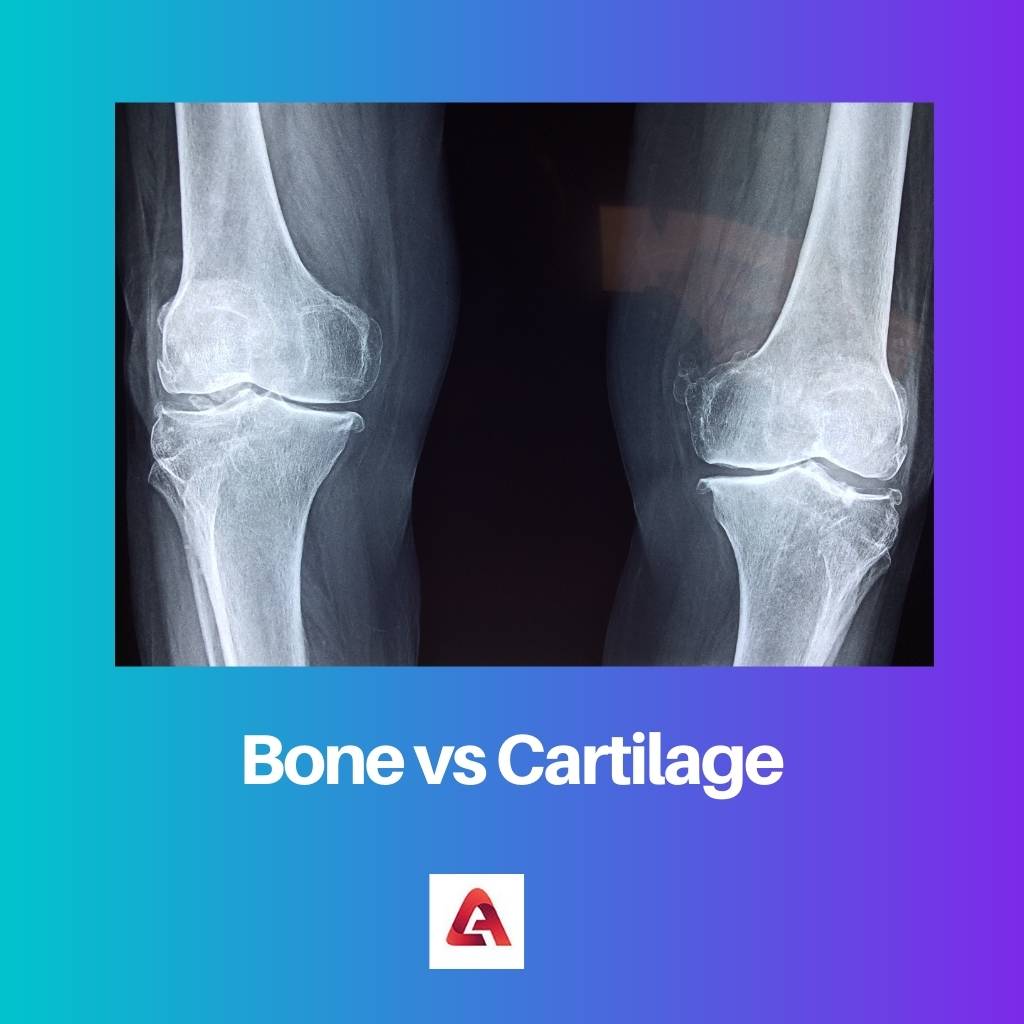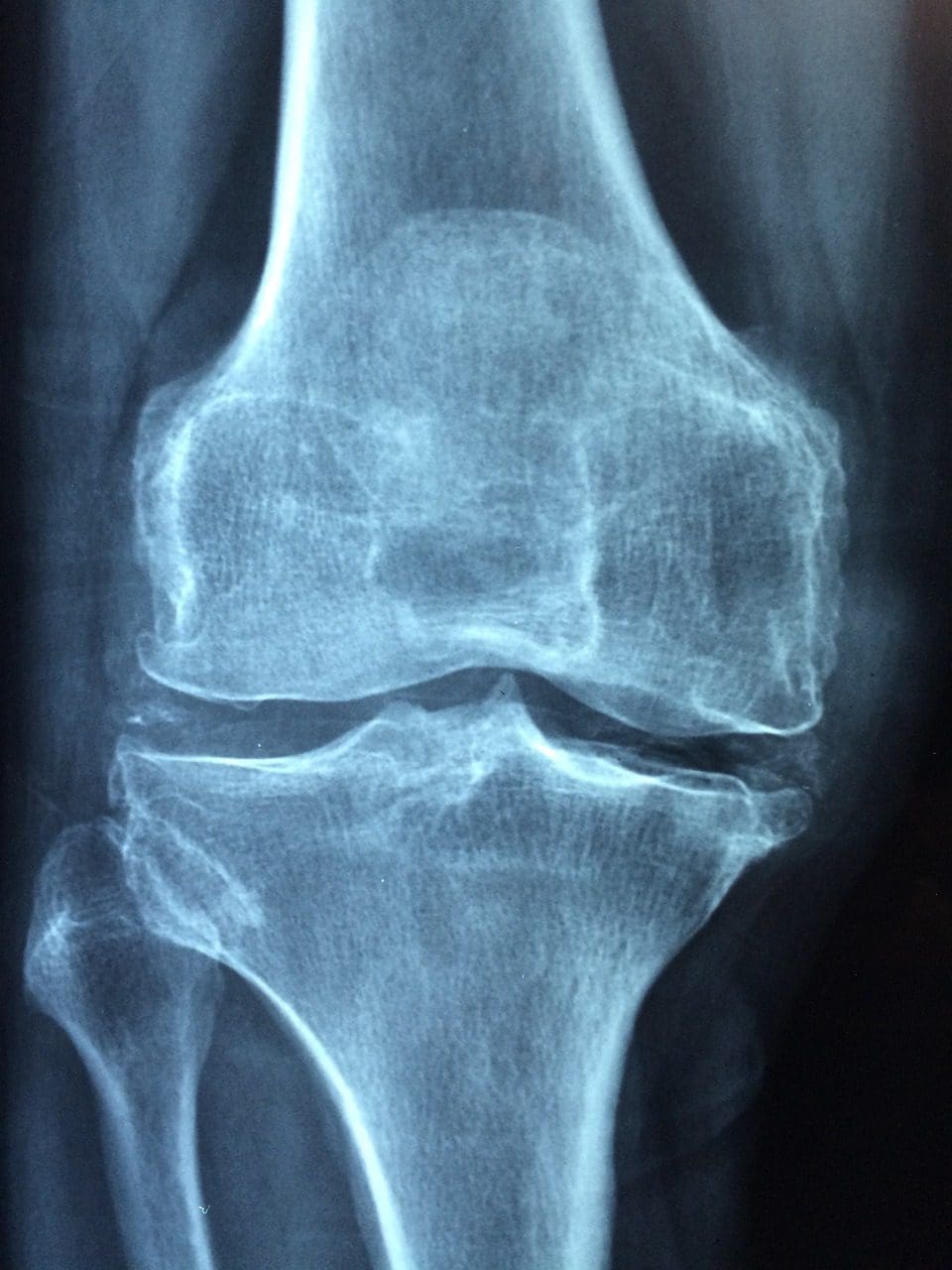Connective tissue is one of the four basic types of tissue in our body that provide support, cohesion, protection and connection between all other tissues of the body.
Bones and cartilage and types of specialized connective tissue that give support to the body protect the body and provide a framework for the body’s various organs and tissues.
Key Takeaways
- Bones are rigid structures composed of calcium and phosphate, supporting and protecting vital organs.
- Cartilage is a flexible connective tissue composed of chondrocytes and collagen, acting as a cushion between joints.
- Both are essential components of the skeletal system, each with unique functions and properties.
Bone vs Cartilage
Bone forms part of the vertebral skeleton. It is hard, inelastic, highly vascularized and a tough, strong organ. Cartilage is a connective tissue that protects the bone from rubbing against each other. It is soft, elastic, thin, avascular, flexible and resistant to compressive forces.

Bones are rigid, strong, non-flexible supportive connective tissues made up of bone cells called osteoblasts, osteoclasts, and osteocytes, enclosed in a calcified extracellular matrix(ECM).
The major mineral in the ECM of bones is calcium and phosphorus that, on maturation, form hydroxyapatite crystals with the chemical formula Ca10(PO4)6(OH)2.
Cartilages are semi-rigid, flexible, supportive connective tissues made of specialized tissues called chondrocytes that produce their extracellular matrix composed of organic collagenous proteins—a ground substance made up of fibres and chondroitin sulphate and proteoglycan.
The collagen and elastin fibres provide the cartilage with its elastic and compressible nature.
Comparison Table
| Parameters of Comparison | Bone | Cartilage |
|---|---|---|
| Nature | Strong, rigid, non-flexible tissue | Semi-rigid, flexible, compressible tissue. |
| Types of cell | Made up of there are types of cells called: 1.Osteoblasts 2.Osteoclasts 3.Osteocytes | Made up of cells called chondrocytes. |
| Extra-cellular Matrix | Made up of both organic and inorganic materials. Organic materials include collagen and fibres. Inorganic materials include calcium and phosphate minerals. | Made up of organic materials including collagen, proteoglycans, elastin fibres, and glycosaminoglycan. |
| Calcification | Made up of both organic and inorganic materials. Organic materials include collagen and fibres. Inorganic materials include calcium and phosphate minerals. | No calcification present, except in calcified cartilage. |
| Compressibility | Not compressible. It is brittle. | It is compressible and hence is found in bone joints. |
| Elasticity | Not elastic in nature. | Elastic in nature. |
| Vascular System | Bones are supplied by a rich network of blood vessels. | Cartilage is an avascular tissue. |
| Canal System | In bones, Haversian and Volkmann canal systems are found. | In cartilages, both Haversian and Volkmann canals are absent |
| Growth | Growth in bones takes place in both directions. | Growth in cartilages takes place only in one direction. |
| Types of growth | Growth in bones can be 1.Endochondral. 2.Intramembranous. | Growth in cartilage can be: 1.Interstitial. 2.Appositional. |
| Types | Types of bones are: 1.Compact bone 2.Spongy bone | Types of cartilage are: 1.Hyaline 2.Fibrocartilage 3.Elastic cartilage. |
What is Bone?
Bones are a type of specialized connective tissue made up of two components: bone cells and an extracellular matrix. Bone cells are called osteoblasts, osteoclasts, and osteocytes. These cells arise from osteoprogenitor cells.
The extracellular matrix of bones is made up of organic and inorganic materials, the most important I then being calcium phosphate crystals called calcium hydroxyapatite.
The microstructure of bones shows that each bone cell lies in spades called lacunae which are arranged in closely packed systems called osteons. Osteons are richly supplied by blood and lymph vessels through the specialized canals called Haversian and Volkmann canals.
Calcification of cartilage from bones. Bones are mainly of two types :
1. Compact Bone: Osteons are closely packed in the extra-cellular matrix.
2. Spongy Bone: Osteons are loosely scattered in the extra-cellular matrix.
The main functions of bone are providing a supportive framework to the body, protecting internal organs, giving shape to the body and helping in body movement. For example, the humerus, skull bones, radius, pelvic girdle etc.

What is Cartilage?
Cartilages are a type of specialized connective tissue made up of cartilage cells called chondrocytes and chondrocytes. Chondrocytes secrete their matrix.
The matrix consists of organic materials only consisting of collagen fibres, proteoglycans, and elastin fibres that provide elasticity to this tissue.
The microstructure of cartilage shows that it lacks canal systems and any vascular supply. It derives nutrition from surrounding cell matrices.
Some cartilage may be calcified. Some of the best examples of cartilage are nose and ear cartilage which is movable and bendable. Cartilages are also present in the bone joint, allowing smooth movement and shock absorbance.

Main Differences Between Bone and Cartilage
- The primary difference between bones and cartilage lies in their rigidity and elasticity. Bones are rigid and brittle in nature, while cartilages are elastic and compressible.
- The extracellular matrix of bone suffers from cartilage. Bones have both inorganic and organic materials in their extracellular matrix, while cartilages have only organic materials.
- Bone cells differ from cartilage cells both in structure and function. Bone cells are called osteoblasts and osteocytes, while cartilage cells are called chondrocytes. The primary function of bone cells is calcification, while that of cartilage is producing its extracellular matrix.
- Bone tissues are richly supplied by blood and lymph tissues through specialized connecting channels called Haversian and Volkmann channels. Cartilages are avascular; thus, they lack any such channels.
- The bone grows bidirectional while cartilage grows uni-directionally.
- Bones provide rigid support, providing shape and protection to all organs during cartilage helping in elasticity and compressibility for smooth function along with support.

- https://www.sciencedirect.com/science/article/pii/875632829390081K
- https://www.sciencedirect.com/science/article/pii/S108495210090243X

The article adeptly delves into the substantial differences between bone and cartilage, offering an in-depth analysis of their structural and functional disparities. The accompanying comparison table provides a clear reference for understanding the contrasting features of these specialized connective tissues.
The attention to detail in describing the microstructure and features of bones and cartilage is commendable. It’s a compelling piece of information for those delving into histological studies.
I agree. The article effectively communicates the complexities of bone and cartilage, making it an informative read for individuals interested in anatomical studies.
The section outlining the nature and composition of bones and cartilage is highly informative. The detailed comparison table makes it easier to understand the contrasting features of bone and cartilage.
The article provides an insightful exploration of bone and cartilage, delivering a comprehensive understanding of their characteristics, microstructure, and functional attributes. The detailed comparison enhances the clarity of information for readers interested in biological and anatomical studies.
I wholeheartedly agree. The in-depth analysis of bone and cartilage in this article offers invaluable knowledge for individuals delving into the complexities of human anatomy.
The article’s elucidation of bone and cartilage features and functions is highly informative. The meticulous portrayal of their structural differences and roles in the body makes it a compelling read for anyone seeking to expand their scientific understanding.
The detailed explanations of bone and cartilage are commendable. The section highlighting the microstructure and composition of these connective tissues provides valuable insights for academic and scientific purposes.
The meticulous analysis of bone and cartilage structures contributes to a comprehensive understanding of these connective tissues. The content intricately elaborates on their characteristics and roles in the body.
Indeed. The article’s focus on delineating the structural and functional disparities between bone and cartilage is beneficial for individuals interested in tissue anatomy and physiology.
The information provided about the nature and composition of bones and cartilage is quite comprehensive and informative. It emphasizes on the detailed differences between the two specialized connective tissues.
I agree. The comparison table presents the differences in a clear and concise manner.
The comprehensive overview of bone and cartilage highlights their pivotal roles in the body. The detailed comparison between their extracellular matrix and composition offers a comprehensive understanding of their distinct properties.
Absolutely. The article’s clarity in presenting the scientific aspects of bone and cartilage makes it a valuable resource for academic study and research.
The detailed exploration of bone and cartilage in this article makes it an excellent resource for individuals seeking to enhance their knowledge about connective tissues. The comprehensive analysis of their nature, composition, and functions is impressive.
The information presented about bone and cartilage is highly detailed, and the comparison table effectively highlights their unique characteristics. This content serves as a valuable educational tool for understanding connective tissues.
The article effectively outlines the key takeaways and provides a detailed comparison between bones and cartilage. It’s a great source of information for those interested in learning about connective tissues.
The article offers a comprehensive understanding of bones and cartilage, emphasizing their distinct characteristics and functions. The discussion about the differences in their extracellular matrix helps in understanding their structural variances.
Absolutely. The information about the microstructure of bones and cartilage provides a deeper insight into their composition and features.